Sebastiaan Goossens
Introducing 4D Geometric Shell Shaping
Jun 07, 2022
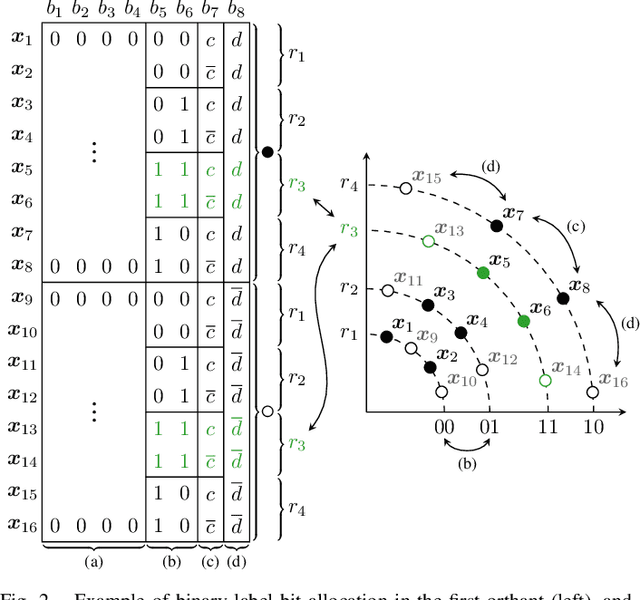
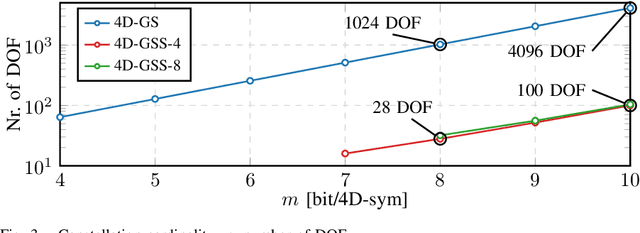

Abstract:Four dimensional geometric shell shaping (4D-GSS) is introduced and evaluated for reach increase and nonlinearity tolerance in terms of achievable information rates and post-FEC bit-error rate. A format is designed with a spectral efficiency of 8 bit/4D-sym and is compared against polarization-multiplexed 16QAM (PM-16QAM) and probabilistically shaped PM-16QAM (PS-PM-16QAM) in a 400ZR-compatible transmission setup with high amount of nonlinearities. Numerical simulations for a single-span, single-channel show that 4D-GSS achieves increased nonlinear tolerance and reach increase against PM-16QAM and PS-PM-16QAM when optimized for bit-metric decoding (RBMD). In terms of RBMD, gains are small with a reach increase of 1.6% compared to PM-16QAM. When optimizing for mutual information, a larger reach increase of 3% is achieved compared to PM-16QAM. Moreover, the introduced GSS scheme provides a scalable framework for designing well-structured 4D modulation formats with low complexity.
4D Geometric Shell Shaping with Applications to 400ZR
Jun 07, 2022

Abstract:Geometric shell shaping is introduced and evaluated for reach increase and nonlinearity tolerance in terms of MI against PM-16QAM and PS-PM-16QAM in a 400ZR compatible transmission setup.
Experimental Validation of Sequence-Wise Predistorter for Evaluation of Geometrically Shaped 128-QAM
May 11, 2022

Abstract:A predistorter for transmitter nonlinearities is applied to the evaluation of a geometrically shaped constellation, such that constellation points are transmitted correctly during the evaluation of the geometrically shaped constellation.
High-Cardinality Hybrid Shaping for 4D Modulation Formats in Optical Communications Optimized via End-to-End Learning
Dec 20, 2021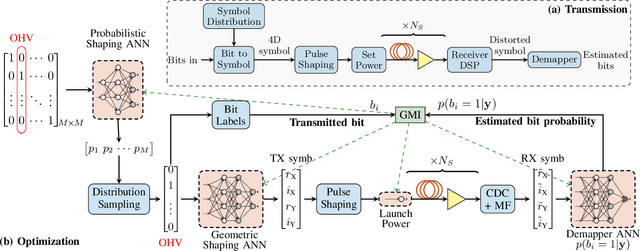
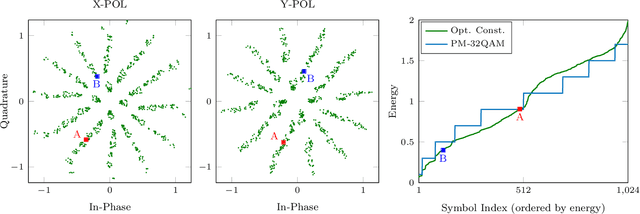
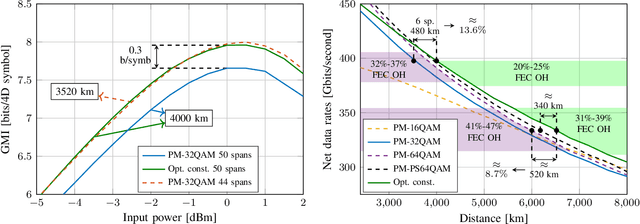
Abstract:In this paper we carry out a joint optimization of probabilistic (PS) and geometric shaping (GS) for four-dimensional (4D) modulation formats in long-haul coherent wavelength division multiplexed (WDM) optical fiber communications using an auto-encoder framework. We propose a 4D 10 bits/symbol constellation which we obtained via end-to-end deep learning over the split-step Fourier model of the fiber channel. The constellation achieved 13.6% reach increase at a data rate of approximately 400 Gbits/second in comparison to the ubiquitously employed polarization multiplexed 32-QAM format at a forward error correction overhead of 20%.
Real-time Transmission of Geometrically-shaped Signals using a Software-defined GPU-based Optical Receiver
Aug 16, 2021



Abstract:A software-defined optical receiver is implemented on an off-the-shelf commercial graphics processing unit (GPU). The receiver provides real-time signal processing functionality to process 1 GBaud minimum phase (MP) 4-, 8-, 16-, 32-, 64-, 128-ary quadrature amplitude modulation (QAM) as well as geometrically shaped (GS) 8- and 128-QAM signals using Kramers-Kronig (KK) coherent detection. Experimental validation of this receiver over a 91 km field-deployed optical fiber link between two Tokyo locations is shown with detailed optical signal-to-noise ratio (OSNR) investigations. A net data rate of 5 Gbps using 64-QAM is demonstrated.
 Add to Chrome
Add to Chrome Add to Firefox
Add to Firefox Add to Edge
Add to Edge